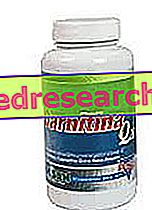Generality
Description: provolone is a spun paste cheese - produced from cow's milk (Frisona breed) - medium-aged (at least 3 months), sweet or spicy, with a truncated cone or pear or melon or salami or flask shape.

The flavor and aroma of provolone vary according to the type of rennet used and the seasoning; the young one is ready to eat, it has a soft and elastic (but not chewy) paste with a milk, sweetish, buttery flavor (veal rennet) and a delicate odor. On the contrary, the seasoned-spicy provolone must have a firm, firm, NOT elastic dough, with a strong, spicy, fairly savory taste (kid or lamb rennet) and a pungent odor.
Origin and area of production: provolone is a typical cheese of the "Valpadana" area; it is produced mainly in the regions of Lombardy and Veneto, particularly in the provinces of: Cremona, Brescia, Verona, Rovigo, Padua and Piacenza. The neighboring municipalities of the provinces of Bergamo, Mantua and Milan are included, but the province of Trento is also involved.
The origins of provolone are likely to be traced back to the 1800s due to the emulation of the "provola campana", although the cheese from the northern plains today holds the certification of Protected Designation of Origin (PDO).
Production and maturing of provolone: provolone is a cheese made from cow's milk spun. The raw material, previously subjected to low (or slow) pasteurization, is brought to 37 ° C and then added to calf rennet (sweet provolone) or kid / lamb rennet (spicy provolone). Firming, the curd emerges; this is then broken, crumbled, cooked at 50 ° C, fermented for 40 hours and spun by immersion in boiling water (automated process). The provolone is then shaped, cooled, sometimes smoked and put in brine; the sweet one matures from 1 to 3 months while the spicy one also more.
Gastronomic aspects
The provolone is a cheese to be enjoyed natural or accompanied with white bread; plausible food combinations are:
- Sweet Provolone: with salad (Belgian endive, endive, radicchio, lettuce, rocket, corn lettuce etc.) and seasonal vegetables (spinach, courgettes, beets, etc.)
- Spicy Provolone: with pinzimonio, peperonata, caponate, pears and dried fruit.
The provolone is stringy, which is why it often accompanies au gratin preparations (baked or salamander), pizzas, focaccia, savory pies, etc .; it brilliantly replaces mozzarella. The provolone also boasts a preparation of its own, like a dish, "grilled" (sliced) or "fried" (sliced or breaded sticks). Spicy provolone is also used grated on very strong first courses.
The oenological combination of the sweet provolone is with white and delicate wines, while the spicy one is with full-bodied and soft or even sweet white wines.
Hygiene and nutritional properties
| Provolone nutritional composition - INRAN Food Composition Tables | ||||||||||||||||||||||||||||||||||||||||||||||||||||||||||||||||||||||||||||||||||||
 | ||||||||||||||||||||||||||||||||||||||||||||||||||||||||||||||||||||||||||||||||||||
Nutritional values (per 100 g of edible portion)
| ||||||||||||||||||||||||||||||||||||||||||||||||||||||||||||||||||||||||||||||||||||
Hygienic aspects
provolone is a cheese that does not present major hygienic risks during production; on the other hand, in home conservation, it suffers a deterioration of medium size. In the event that the provolone remains exposed to heat and is NOT kept properly sealed in the refrigerator, the appearance of Geotrichum candidum comes easily. It initially appears as a thin patina and, after sporulation, gives rise to a white felt. The appearance of Sporotrichum aureum causes the provolone crust to yellow.
Additives
the additives granted in the production of provolone are more than one, although in Italy (unlike in many Northern European countries) the use of nitrates was ABOLISHED in the dairy industry. In particular, the addition of hexamethylenetetramine in the spinning water is allowed in the provolone; this, releasing formaldehyde, reduces the fermentative processes of proteolysis and positively intervenes on the swelling (early and late) of the pasta. Being harmless, this additive has no contraindications and does NOT even compromise the organoleptic and gustatory structure of the cheese; this is justifiable by the fact that the bouquet of provolone is born and grows thanks above all to the lipolytic and non-proteolytic action of the microorganisms involved.
In provolone it is also allowed the use of lysozyme as an effective antibiotic against the proliferation of Clostridia Butyricum, Clostridia Tyrobutyricum, Listeria Monocytogenes Scott A etc.
Nutrients
provolone is a food with a high energy density; it is poor in water, rich in fat, protein and contains a few grams of soluble carbohydrates.
The lipids, present in considerable quantities, are mostly made up of saturated fatty acids; this aspect, associated with the presence of cholesterol, gives the provolone nutritional characteristics not suitable for the hypercholesterolemic diet.
Proteins have a high biological value and soluble glucides are scarce, even if they are made up of lactose; this sugar is potentially responsible for adverse reactions in intolerant subjects.
The overall caloric intake is quite high and this (also taking into consideration the total lipid level) complicates the use of provolone in the low-calorie diet against overweight.
From the salty point of view, large quantities of sodium (NOT suitable for feeding against hypertension), calcium and phosphorus can be deduced. Among the vitamins, good concentrations of riboflavin (vit. B2) and retinol (vit. A); appreciable the content in vit. E (tocopherols).
Bibliography:
- L atte, yogurt, butter, cheese - G. Sicheri - Hoepli - pag 131-132
- Cheeses. Know and recognize the best productions of Italy and Europe - F. Guatteri - DeAgostini - pag 178
- Practical guide to hygiene and legislation for those who produce, sell and supply food - C. Correra, G. Ottogalli - Tecniche Nuove - pag. 15.



